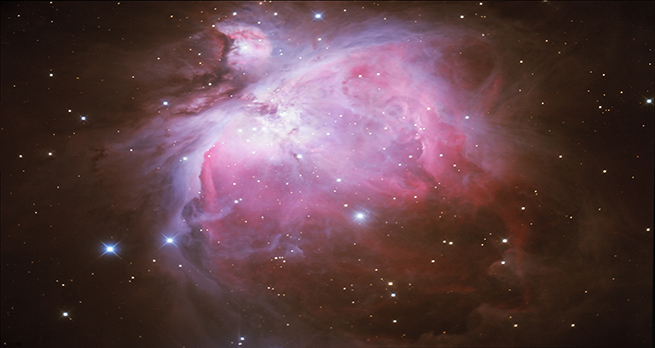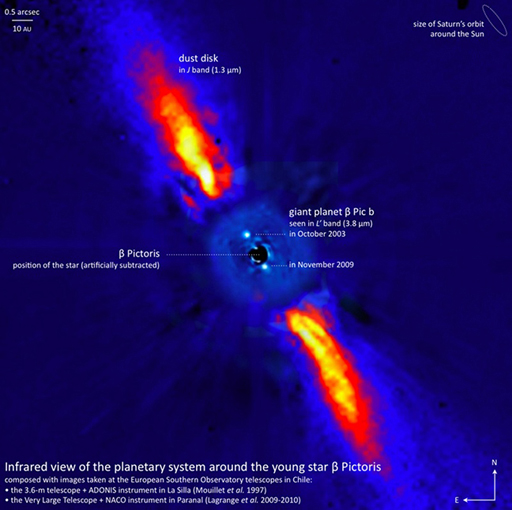4.2.3 Planetesimals
Once the planetesimals reach a certain size – greater than a kilometre or so – they begin to have a significant gravitational field.
This makes their growth much easier and quicker, as other planetesimals are attracted to them and their growth progresses by impacts of these relatively large bodies.
One of the best known examples of a star surrounded by a disc is Beta Pictoris, as shown in Figure 14. The bright colours represent the disc, which you are viewing as if it was edge-on. In the centre, the star has been blanked out, so that additional detail can be seen. The central part of the disc appears to be empty, apart from a two bright spots. These are two separate observations of a single giant planet around Beta Pictoris, taken at different times. The rest of the central part of the disc appears to be empty. In the top right hand corner of the image, you can see an ellipse which is the size of the orbit of Saturn drawn on the same scale.
If you looked at the Solar System from a neighbouring star, it would appear to be a star surrounded by empty space – the planets would not be distinguishable. What would be seen, though, is a ring of dust out beyond Neptune. This is the Kuiper Belt, and you will learn more about it, and the other small bodies in the Solar System in the following sections.

